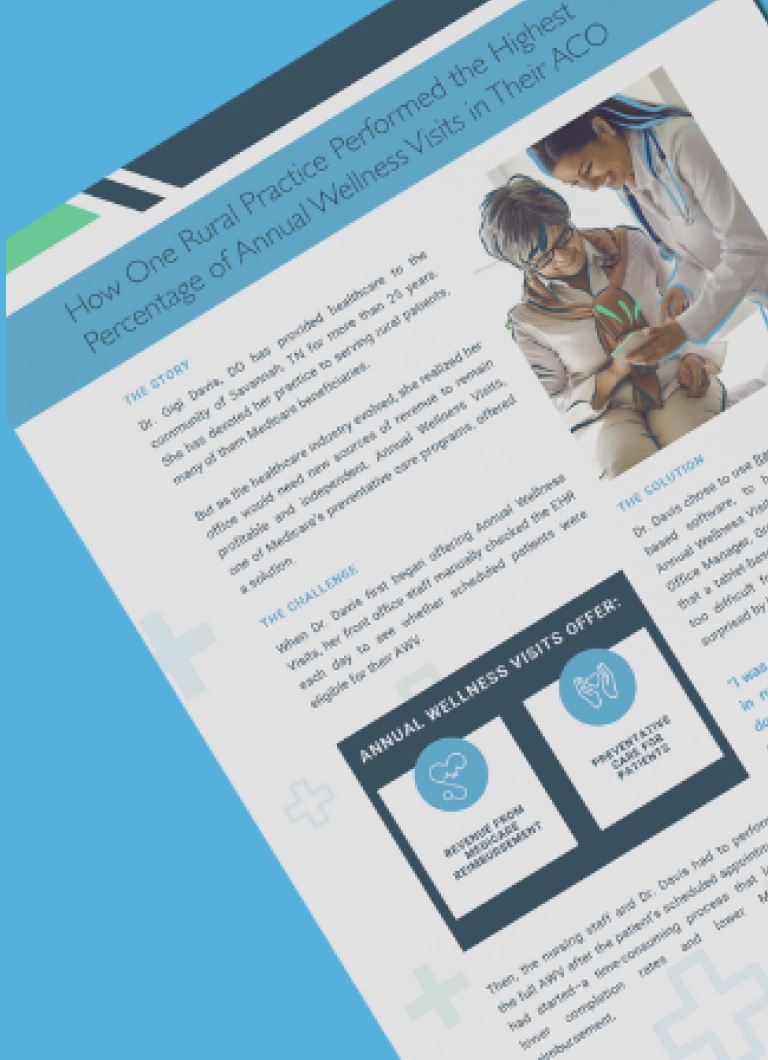
Talk with a ChartSpan Representative Today!
Our team is ready to help you improve patient care and outcomes.
Blog
Value-Based Care Revenue – Which Programs Actually Deliver
Grading your "performance" is where the complexity all begins. Imagine playing a football game in which each quarter, the opponent, the rules, and even the stakes change. Yet, you are expected to adapt to each set of circumstances and play the game with the same team. This fictitious scenario is eerily similar to one of the biggest issues with the Value-Based Care initiative. There are numerous payer models, programs, services, and CPT codes that all fall under its umbrella. So where do you start? Is one better than the other? Is there a natural progression to follow? Do you just stick your head in the sand and do nothing? These are questions that are hard to answer and often lead to analysis paralysis.
Which value-based care program is the best to start with?
A frequent question is, "What is the best way to begin moving towards Value-Based Care (VBC) revenue?"
To help evaluate, ask these questions for each program:
- How much investment will this require of my organization(s)? (financially & resources)
- What is the revenue opportunity with this program?
- Is there a downside risk?
- Does this program enhance my ability to perform in the other programs?
- How will this program impact my patients?
Transitions of Care Management (TCM)
TCM is a preventative wellness program for patients with moderate or high-complexity medical issues who are transitioning out of an inpatient setting, such as a hospital. The program aims to prevent readmissions.
PROS: TCM is fairly easy to deploy and doesn’t require significant investment for software or personnel. When performed well, TCM can positively impact MSSP Shared Savings programs through improved readmission rates.
CONS: Without a dedicated admission discharge transfer (ADT) feed from hospitals it can be a very manual process. Patients must show up for the appointment to be reimbursed. Overall revenue upside is minimal.
Remote Patient Monitoring (RPM)
RPM uses virtual technology devices to monitor and report on patients with acute or chronic conditions. The devices are often enabled at the patient’s home and send the collected medical data back to their provider.
PROS: RPM provides excellent per-patient, recurring revenue opportunities with several monthly reimbursable codes. Early data indicates effectiveness for high-acuity patients with uncontrolled disease states.
CONS: This program is logistically complex; it requires the management of hardware and devices for patients that can be technologically challenged. High copays for patients will inhibit patient enrollment and program churn-out rates will be high as patients absorb their copays. Additionally, investment in robust third-party software is usually needed to deploy a program.
Accountable Care Organizations (ACO) MSSP Programs
An ACO is a group of healthcare practitioners who voluntarily agree to share responsibility for the quality and cost of care they provide to patients.
PROS: ACO program revenue upside can be sizable if practices and health systems perform well. Many ACOs provide templates and personnel to guide participant performance throughout the year. The focus is on reducing the patient cost of care.
CONS: ACO participation requires significant upfront investment and potential ongoing fees depending on ACO structure. Many ACOs perform poorly, never achieving shared savings for their members. Some even lose money when grouped into the performance of other practices outside of your control.
At-Risk Payer Plans:
Program in which healthcare entities receive a capitated payment for attributed beneficiaries. The entity is then financially liable for all costs associated with the care of those patients. If the cost is lower than the allotted amount, the entities get to keep a portion of the savings.
PROS: Individualized payer plans offer a high potential revenue upside if you perform well. They are similarly designed as MSSPs, however, you’ll often have more flexibility to impact cost savings.
CONS: There is a high potential downside. The penalties that are assessed for poor performance can be expensive. To be successful, your Quality Manager must be well-versed and have mastered all the VBC program elements.
Chronic Care Management (CCM)
CCM is a Medicare program that reimburses providers for non-face-to-face care coordination services for patients who have been diagnosed with two or more chronic conditions. It is a preventative program designed to address the needs of patients in between their office visits.
PROS: 82% of Medicare patients qualify for the program which can be billed every 30 days, presenting a sizable revenue stream opportunity. Outcomes of the program align with other VBC revenue programs such as ACOs or at-risk plans. The CCM program creates a closer relationship with high acuity patients which often translates to more office visits and increased FFS revenue.
CONS: Operationally complex. Patient enrollment can be very challenging. The program can have high churn rates if the patient experience isn’t well executed. 24-hour access to care managers can be difficult to set up and manage as well. High volumes of claims can overwhelm a short-staffed billing department.
Annual Wellness Visits (AWV)
The AWV is a personalized prevention plan that is designed to help prevent disease and disability based on the current health and risk factors of a patient. This plan is determined by the patient’s self-reported answers on the Health Risk Assessment questionnaire.
PROS: Virtually every Medicare patient is eligible to complete and be reimbursed for an AWV. All copays and deductibles have been waived. This program has a decent revenue opportunity if you can achieve good capture rates. It is easy to spin up with various software options. Ideally aligns with ACO and at-risk plan programs.
CONS: Can only be completed once a year. Patients usually don’t like coming in for well visits which can hinder capture rates. Can be burdensome on staff depending on who is scheduling these visits and administering the actual health risk assessments. Can be time-consuming depending on how many tertiary codes you want to attempt to address and capture.
When reviewing the pros and cons of each program they present a unique option to consider. There are high-risk high rewards, low-risk lower rewards, and options that are right in the middle. In addition, most of the VBC programs not only affect one another but can often be mission-critical to the other's success.
But the purpose of this exercise was to provide a recommendation on the ideal entry into the VBC revenue programs and after careful analysis, it’s clear that the ideal entry points are Annual Wellness Visits (AWVs) and a Chronic Care Management program (CCM). The rationale for this recommendation is based on the answers to our initial five evaluation questions.
- How much investment will this require of my organization(s)? (financially & resources)
CCM and AWV do not require major capital investments to initiate. However, scaling and mastering the operational workflow for both programs can be challenging. If mastery of the workflow isn’t feasible there are outsourcing options as a managed service available in the marketplace. - What is the revenue opportunity with this program?
Both CPT codes have a financially meaningful reimbursement attached. CCM is a monthly code that averages $42 (non-complex) per month for traditional practices and $65 per month for RHCs, FQHCs, and Critical Access Hospitals. There are also complex codes that offer other additional reimbursements but require more dedicated provider time and generate higher patient copays. AWVs are annual but reimburse an average of $140 and have all patient copays and deductibles waived. - Is there a downside risk?
There are no performance penalties for either code. - Does this program enhance my ability to perform in the other programs?
Both programs possess the foundational elements to help you perform better as part of an ACO or other alternative payment model. The assessment portion of the AWV allows patients to self-report information that is crucial in developing an ongoing preventative plan. The CCM program is designed to coordinate that plan and to ensure care gaps are closed and quality measure benchmarks are achieved. - How will this program impact my patients?
Both programs are designed to enhance the patient-provider relationship by providing tools to help bring the patient into the center of their care continuum.
Conclusion
Whether you’ve tried to do AWVs and CCM in the past, are currently performing them, or are still on the sidelines, the fact remains that both provide a great pathway into the VBC revenue stream. Sometimes starting with one program first, mastering it, then moving on can be a great strategy. Do your due diligence when partnering or purchasing from experienced value-based care vendors. Ask pointed questions of the vendor. Talk to references. And most importantly have them show you real data. The good ones will be able to do all of these and before you know it you will be on your way to enjoying value-based care revenue for your practice, hospital, or health system.
Subscribe for More Insights
Get valuable resources delivered straight to your inbox.
"*" indicates required fields






